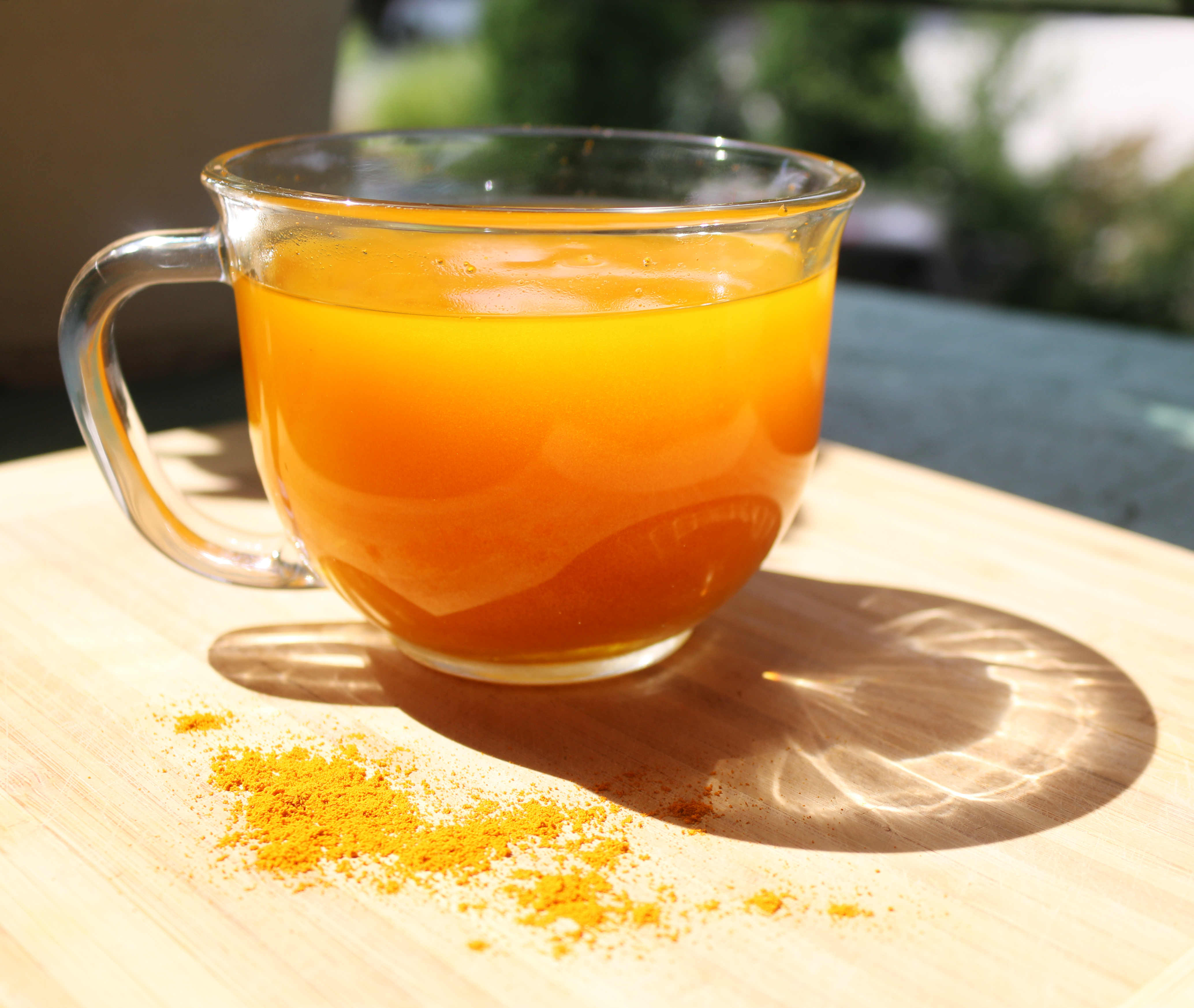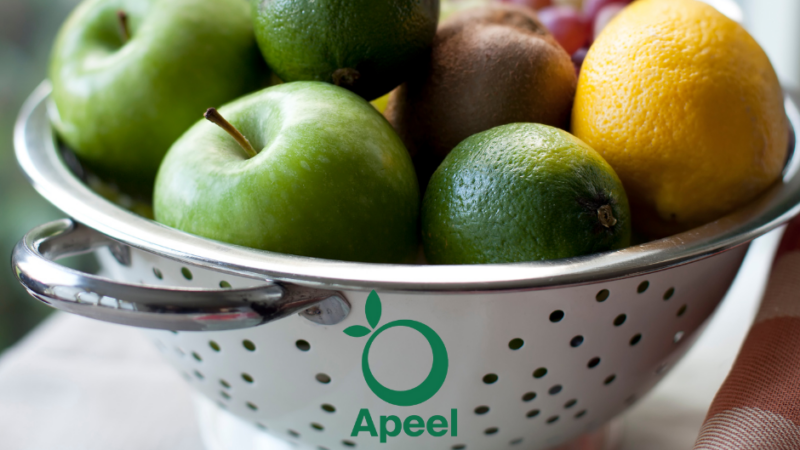Winter Warmth Recipe: Anti-Inflammatory Turmeric Ginger Tea

Have you tried turmeric ginger tea? Turmeric has a huge reputation for its proven health benefits. It is part of the ginger family, hence its similar looks! When consumed together, ginger and turmeric can be a great cure for cold and flu. Treasure Valley snow will soon make its 2017 appearance. Our northern neighbors have already seen a share. Today, we give you the recipe for an anti-inflammatory turmeric ginger tea. Keep fresh ginger and turmeric on hand for the cold days coming. Bonus recipe included for a spiced creamy turmeric-ginger tea.

Yields 3 cups
Ingredients
2.5 inch piece of fresh turmeric root or 1 tsp of ground turmeric
1 inch of fresh ginger root
4 cups water
Lemon / lime juice
*Black pepper
Honey
**NOTE: To increase the absorption in the body (turmeric has low absorption and rapid metabolism), you need to add a little fat to the tea, such as a teaspoon of the coconut oil or black pepper in this recipe, which aids in the absorption of curcumin.
Preparation:
- Add water into the pot to boil
- Clean and roughly chop the turmeric and the ginger root
- Bring to a boil and simmer for 15 minutes
- Allow the mixture to cool for about 5 minutes
- Add turmeric tea to cup(s)
- Add a pinch of black pepper to each cup
- Juice 1/4 lemon / lime into each cup
- Add 1 teaspoon of honey and stir well
FRESH SPICE TIPS:
Storage:
Store fresh turmeric in the fridge; keep them wrapped loosely with plastic wrap to prevent them from mold. Turmeric can also be frozen. What I tend to do, is keep half the pack in the fridge and the other half in the freezer
I make the tea from fresh turmeric, but if you can’t find fresh ones, you can use ground turmeric. The active ingredient in turmeric is called curcumin. The black pepper helps to enhance the bioavailability of curcumin by a thousand times, so add a pinch in your cup when drinking.
Dried Spice alternative:
If you cannot find fresh turmeric, the general rule of thumb for converting dried spice to fresh is 1 to 3. So, 1 teaspoon of dried spice is equal to 3 teaspoons (1 tablespoon) of fresh. To make it easier for you, I use around 2 or 2.5 inch in length of turmeric for 4 measuring cups of water, this is equal to about 1 tablespoon of freshly grated spice.
And with just 1 tablespoon of turmeric, it is going to provide you with 15% daily intake of iron, 5% vitamin B6, 5% fibre and 3% magnesium
Stains Tips when preparing the tea:
Turmeric’s bright yellow/orange color can stain fingers and surfaces and can be quite tough to clean. You can clean with a solution of baking soda, white vinegar and water to wash it out.
To minimize stains, don’t peel the turmeric root or grate it as some people prefer to. First, clean the turmeric root; give it a good wash and scrub. What I like to do is re-use a small piece of plastic wrap, and place it on the chopping board with the turmeric root and then carefully and roughly chop it up. When done, add the turmeric into the pot and quickly clean your knife. After drinking the tea, rinse and/or brush your teeth!
The health benefits of turmeric:
- Powerful anti-oxidant
- Body and liver detoxifier
- Cancer prevention
- Prevent and slow the progression of Alzheimer’s disease
- Cleanses and purifies the blood
- Boost metabolism
- Eases symptoms of coughs and colds
- Diabetes control
- Reduces inflammation such as all types of arthritis, tendonitis, and other inflammation
- Strengthens ligaments
- Improves skin complexion
- Treatment for skin disorders
- Prevents asthma
- Prevents arthritis
- Anti-depressant
- Reduces joint pain
- Prevents stroke
- Treats fever
- Improves digestion
- Gastrointestinal treatments
- Boosts immune system by improving liver function
- Weight-loss support
- Improves circulation in the body
- Wound healing
- Anti-bacterial
- Natural painkiller
- Prevents internal bleed clotting
- Protects liver tissue
- Reduce allergies
- Protect against sleep deprivation
- Reduces bad cholesterol
- Stimulates secretion of bile which helps break down fat
Quick Recipe Tips: How much Chopped or Diced is in a Ginger Root or Tumeric Root?

Many recipes will call for “1 tablespoon of chopped ginger” or “1 inch of ginger diced” but it is not always obvious to determine actually how much ginger in a …. In order to help make cooking easier we did some experiments to help tell you exactly how much ginger you need to buy.
Fresh ginger is used after removing the skin with a vegetable peeler. Then depending on the end result desired, the ginger can be diced with a knife, grated with a coarse cheese grater, or sliced thinly with a mandoline.
To answer How much ginger in a… we went to the grocery store to check out the fresh spices section. After surveying the selection we discovered that if you weigh 5 different 1 inch pieces of ginger, the weight varies depending on the diameter of the ginger selected. And in turn it can make an even more significant difference in the flavor of your food! Sometimes it is easier when shopping by weight; you tend to get the same amount every time. We decided to use a 2 ounce (56.7 grams) piece of ginger for our tests.
A 1 inch piece of raw ginger with a 1 inch diameter yields about 1.1 tablespoons chopped weighing .26 ounce. A piece measuring a little less than 4 inches, will weigh 1 ounce (28.3 grams) and measure about ¼ cup when sliced. One whole cup of chopped ginger will weigh about 4 ounces. And for cooking large quantities, 1 pound of fresh sliced ginger will yield about 3 cups.
information from howmuchisin.com
photo source: http://yumprint.com/app/search/all/?q=lemon%20ginger%20syrup
photo source: http://www.kimbertonwholefoods.com/turmeric-tea/
Here’s another warming, health boosting turmeric tea. Have YOU tried it?







